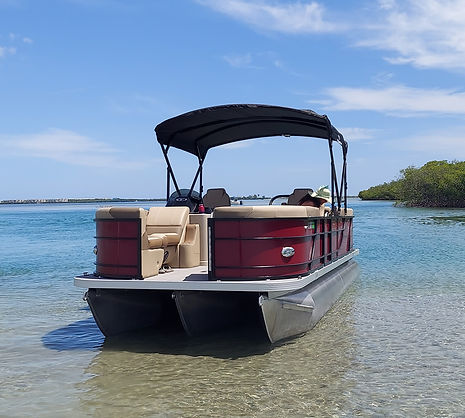
SAFE AND RESPONSIBLE BOATING ON LIME LAKE
Protecting Lime Lake's Ecosystem
We value responsible boating practices and stress the significance of proper boat cleaning. Together, we play a vital role in preventing the spread of invasive species and maintaining the lake's pristine condition. By following boat cleaning protocols, understanding the impact of wake boats, and avoiding power turns, we safeguard the long-term health and sustainability of Lime Lake's ecosystem.

Inspection points on boats, trailers, and vehicles for aquatic invasive species decontamination.
Stop Aquatic Invasive Species
-
Clean your boats, trailers, and equipment thoroughly, removing mud, debris, and aquatic plants before launching or retrieving a watercraft. If possible, use a hose or power washer.
-
Drain all water from live wells, bilges, ballast tanks, and boats before leaving the access site. Consider disinfecting live wells and bilges with a bleach solution (1/2 cup bleach to five gallons of water) when you can. It's essential to remove fish diseases and microscopic invasive species, even if the water looks clean.
-
Dry your boats and equipment completely before leaving an access area or before launching in a different waterbody.
-
Dispose of bait in the trash, never release it into the water. Releasing bait and minnows can accidentally introduce diseases and invasive species.
-
Avoid transferring fish to water bodies other than where they were caught. This prevents the spread of fish diseases and invasive species.

Understanding the Impact of Wake Boats
Wakeboarding boats on Lime Lake, can have environmental consequences worth considering. The powerful wakes they generate may cause erosion, disrupt ecosystems, and disturb aquatic habitats. It is important for Wake Boat owners to be responsible and mindful of the potential damage they can cause. By adhering to boating regulations and practicing environmentally conscious behavior, we can mitigate the negative impact and preserve our water resources for the future.
NO POWER TURNS!
Share the water. Friends Don't Let Friends Powerturn!
What exactly is a power turn? Any time a boat makes a turn at cruising speed, it's called a power turn. Although there are circumstances where a power turn might be necessary, 99% of the power turns you see out on the water are not. Instead, they are dangerous, waste fuel and produce wakes that unnecessarily churn up the water.


Reasons to Avoid Powerturns
Power turns endanger passengers and send wakes out in all directions, even towards the rider, and unnecessarily churn up the water. This endangers other boaters, skiers, paddlers, swimmers, and the stability of the shoreline.
Power turns contribute to shoreline erosion. The wake from a power turn is sent outward at approximately 270 degrees from the boat and can often reach shores. Furthermore, power turns waste fuel.
The Alternative to Power Turning
When you go to pick up your rider, start by pulling the throttle to the idle position. Once the boat has slowed down to a speed where there is no wake, make the turn toward your rider. A slow, controlled turn increases safety and reduces waves.
Of course, there will be the occasional situation in which a power turn might be advisable. If you have to return to your fallen rider quickly because they appear to be injured, in distress, or in danger, a power turn may be the best way to get there quickly.


Boating Laws of the State of Michigan
-
Powered watercraft must always yield right of way to unpowered craft (sailboats, rowboats, kayaks, canoes, paddle boats, etc) or to any watercraft on the starboard (right) side.
-
Jet-skis are considered to be powered watercraft and must obey all regulations thereto. Jet skis are not to operate one hour before sunset until 8 am the next morning.
-
Powered watercraft must only approach within 100 ft of a dock, raft, anchored boat or swimmer at a no wake speed.
-
Any watercraft towing a water-skier, water sled or tube must have competent rear facing observer on board, in addition to the driver.
-
Any operator of a powered watercraft under the age of 16 must have a competent operator on board, or show evidence of having passed an approved marine training course.
-
Any person operating a watercraft in Michigan waters shall operate it in a careful and prudent manner and at a speed that will not endanger life or property.
-
High-speed boating must be done by going counter-clockwise around the lake.


